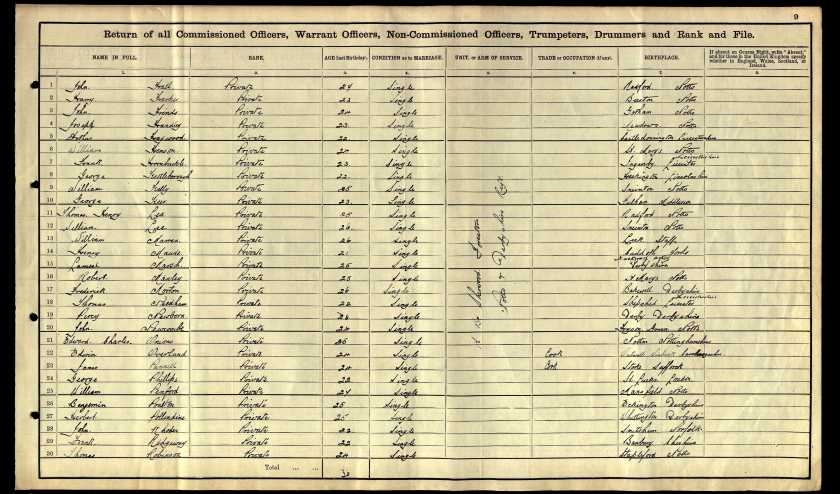Herbert William Pollindine was born in 1886 in Shardlow. His parents were Dearsley Pollindine and Elizabeth Hullyer who had married in 1881 in Shardlow.
By 1891 the family had moved to Whittington. The 1891 census shows they lived at 90 Johnson Street at Sheepbridge.

Sadly, Elizabeth died in 1889 and was buried in Old Whittington churchyard. This left Dearsley with three children. Beatrice 8 years old, Herbert 5 and Emily who was 3.
By the time of the 1901 census Dearsley had also died (in 1898) and the children had been split up. Beatrice was living on Sheffield Road working as a servant, Herbert was living at 48 Fowler Street Old Whittington with John and Amy Booker and is listed as a cousin of the family. At 15 years old he was working as a core maker at the Iron Works. (Probably Sheepbridge)

Poor Emily was an inmate in the Chesterfield Union Industrial School on Ashgate Road.
![Chesterfield3[1]](https://oldwhittingtonopscom.files.wordpress.com/2018/10/chesterfield31.jpg?w=840) Picture from http://www.workhouses.org.uk/Chesterfield/
Picture from http://www.workhouses.org.uk/Chesterfield/

Picture from http://www.workhouses.org.uk/Chesterfield/
Interestingly, during the first world war this was evacuated and taken over by the Lancashire Regiment.
Herbert enlisted in the army around 1907, his Service Number was 11055. He joined the 1st Battalion Sherwood Foresters and as the 1911 census shows he was posted to Bombay, India.
 Herbert is listed fourth from bottom
Herbert is listed fourth from bottom
When war broke out the 1st battalion were recalled and sent over to France, they landed at Le Havre on 5th November 1914. Herbert was wounded in his arm on 25th December 1914. He would have been entitled to wear a wound stripe. (If a soldier appeared in a Casualty list, which Herbert did, then they were entitled to wear a wound stripe under army order 204 of 6 July 1916:
Strips of gold Russia braid, No.1, two inches in length, sewn perpendicularly on the left sleeve of the jacket to mark each occasion on which wounded. Taken from https://www.longlongtrail.co.uk/
At some point (possibly after he returned from being injured) Herbert was transferred to the 2nd Battalion Sherwood Foresters.
There is no service record for Herbert, so it is difficult to confirm which Battles he fought in. If he was transferred to the 2nd Battalion in 1915(2nd Battalion were in 18th brigade attached to 6th Division) then it is quite likely he saw action at the Battle of Hooge in August 1915. This is the first time the Germans used flame throwers in WW1 and must have been a terrible experience for the British Soldiers. You can read more http://ww1countydurham.blogspot.com/2015/08/under-hells-flames-battle-of-hooge.html
It is certain Herbert would have gone on to fight in the Battle of the Somme. The Somme battles were fought between 1st July 1916 and 1st November 1916 and took place in the area around the River Somme.
 Map from http://news.bbc.co.uk/1/hi/magazine/5130386.stm
Map from http://news.bbc.co.uk/1/hi/magazine/5130386.stm
More information on the Battle of the Somme can be read at http://news.bbc.co.uk/1/hi/magazine/5130386.stm
The 2nd Battalion were involved in the Battle of Flers-Courcelette, 15th – 22nd September 1916. This particular battle was notable for being the first battle where British tanks were used.
Herbert was injured on 15th September 1916 and taken to Casualty Clearance Station No 34. This was situated at Daours which was very close to the Somme Battlefields. Herbert died on 27th September 1916 and is buried in Rouen St Sever cemetery. Rouen is quite a way from Daours, but the following excerpt from the Commonwealth War Graves Commission probably explains why Herbert was buried in Rouen.
During the First World War, Commonwealth camps and hospitals were stationed on the southern outskirts of Rouen. A base supply depot and the 3rd Echelon of General Headquarters were also established in the city. Almost all of the hospitals at Rouen remained there for practically the whole of the war. They included eight general, five stationary, one British Red Cross and one labour hospital, and No. 2 Convalescent Depot. A number of the dead from these hospitals were buried in other cemeteries, but the great majority were taken to the city cemetery of St. Sever. In September 1916, it was found necessary to begin an extension, where the last burial took place in April 1920.
It would appear likely that he was taken from the 34th CCS to one of the hospitals at Rouen and sadly that would be where he died.
![6077330_orig[1]](https://oldwhittingtonopscom.files.wordpress.com/2018/10/6077330_orig1.jpg?w=840)
St Sever Cemetery Rouen.
Information on the cemetery can be found at https://www.cwgc.org/find-a-cemetery/cemetery/2800/st.-sever-cemetery-extension,-rouen/

From the grave registration report above Herbert had been promoted to Lance Corporal at some point.
Herbert’s personal effects were shared between his two sisters, Beatrice and Emily, by now both were married.
His medal card shows that Herbert was awarded the British War and Victory medals, he should also have been awarded the 14/15 Star as he was serving overseas before the end of December 1915.

Herbert is commemorated on the Brushes War Memorial Old Whittington.

